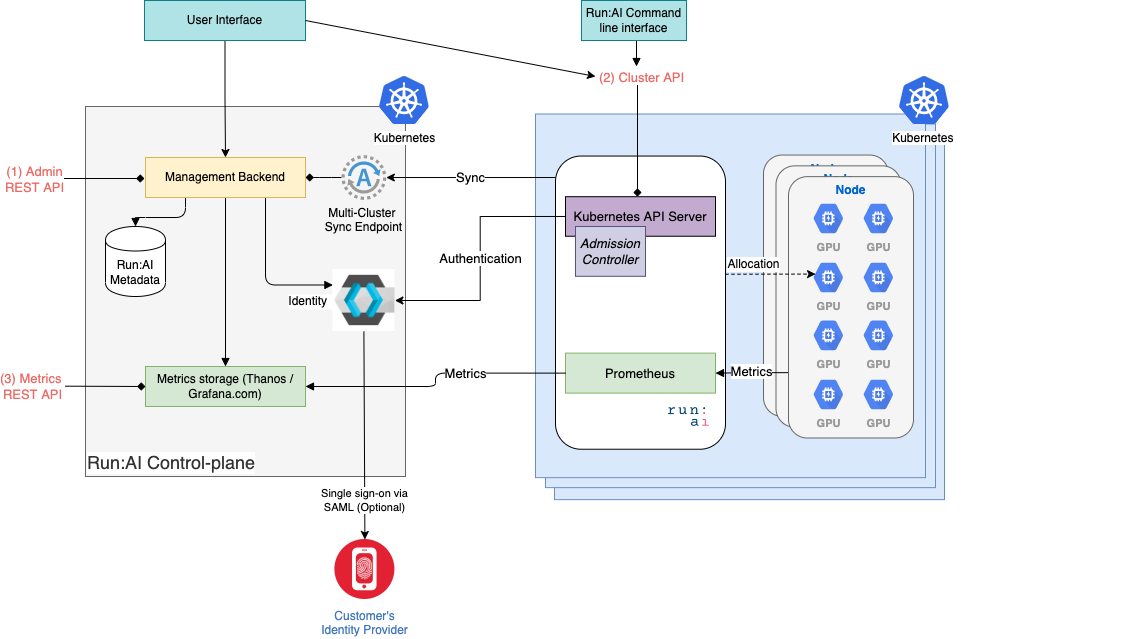📣 The NVIDIA Run:ai docs are moving!
We’ve launched a new documentation site to improve navigation, clarity, and access to the latest features starting from NVIDIA Run:ai v2.20 and above. Visit NVIDIA Run:ai documentation.
Documentation for versions 2.19 and below will remain on this site.
Overview¶
Developers can access Run:ai through various programmatic interfaces.
API Support¶
The endpoints and fields specified in the API reference are the ones that are officially supported by Run:ai. Endpoints and fields that are not listed in the API reference are not supported.
Run:ai does not recommend using API endpoints and fields marked as deprecated and will not add functionality to them. Once an API endpoint or field is marked as deprecated, Run:ai will stop supporting it after 2 major releases for self-hosted deployments, and after 6 months for SaaS deployments.
For details, see the Deprecation notifications.
API Architecture¶
Run:ai is composed of a single, multi-tenant control plane. Each tenant can be connected to one or more GPU clusters. See Run:ai system components for detailed information.
Below is a diagram of the Run:ai API Architecture. A developer may:
- Access the control plane via the Administrator API.
- Access any one of the GPU clusters via Cluster API.
- Access cluster metrics via the Metrics API.
Administrator API¶
Add, delete, modify and list Run:ai meta-data objects such as Projects, Departments, Users, and more.
The API is provided as REST and is accessible via the control plane endpoint.
For more information see Administrator REST API.
Cluster API¶
Submit and delete Workloads.
The API is provided as Kubernetes API.
Cluster API is accessible via the GPU cluster itself. As such, multiple clusters may have multiple endpoints.
Note
The same functionality is also available via the Run:ai Command-line interface. The CLI provides an alternative for automating with shell scripts.
Metrics API¶
Retrieve metrics from multiple GPU clusters.
See the Metrics API document.
API Authentication¶
See API Authentication for information on how to gain authenticated access to Run:ai APIs.
